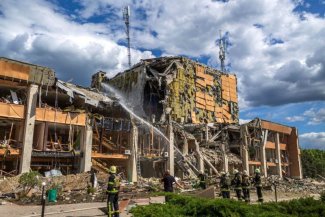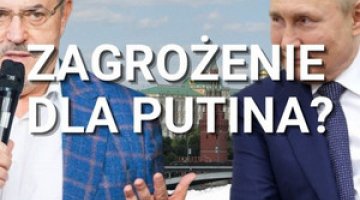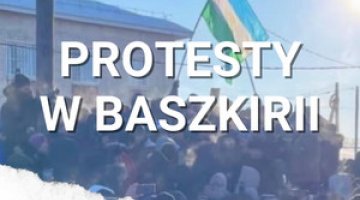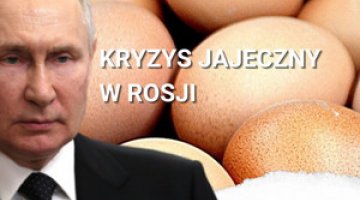Russia’s attack on Ukraine: day 88

The Ukrainians are repelling hostile attacks at the junction of the Kharkiv, Donetsk and Luhansk oblasts, in most cases forcing the enemy to withdraw to previously held positions. The main area of fighting remains the area of Sievierodonetsk – the aggressor’s forces were to enter the northern part of the city, as well as destroy the bridge connecting it with neighbouring Lysychansk. They still failed to capture the Lysychansk–Bakhmut road on the border of the Donetsk and Luhansk oblasts. There was to be a reduction in the intensity of combat operations in the central part of the Donetsk Oblasts (near Avdiivka and Kurakhove), with sporadic clashes also taking place in the Zaporizhzhia Oblasts. Artillery shelling predominated; the Russian air force also continued bombing Ukrainian positions and their immediate hinterland. Outside the combat areas, Kharkiv and its surroundings, Mykolaiv, towns in the Dnepropetrovsk Oblasts south of the town of Kryvyi Rih and the border areas of the Chernihiv and Sumy oblasts remain targets of shelling and bombardment.
In recent days, the invaders have carried out rocket attacks on railway infrastructure facilities and warehouses in Kharkiv (Lozova), Poltava (Lubny Raion), Zaporizhzhia (Vilniansk on the north-eastern outskirts of Zaporizhzhia) and Zhytomyr (Korosten and again in recent days Malyn) oblasts, as well as military infrastructure in Rivne Oblasts. Defenders reported that some rockets were shot down.
President Volodymyr Zelensky has announced that a decision will be made at a meeting of NATO defence ministers on 23 May on the transfer of US Multiple Launch Rocket System (MLRS) launchers to Kyiv. According to media reports, these would be M270 launchers, varying in calibre and range of the missiles used. ‘The Washington Post’ also reported on the possibility of supplying Ukraine with Patriot air defence systems. In July it is to receive 15 German Gepard self-propelled anti-aircraft artillery sets with a reserve of 59,000 rounds of ammunition. In turn, the Operational Command ‘West’ of the Ukrainian army presented ‘banderomobiles’ (civilian pick-up trucks converted into an unarmoured light weapons platform) with American Mark 19 automatic grenade launchers mounted.
According to the Zaporizhzhia Oblasts authorities, Ukrainian sabotage groups are still active: in Enerhodar, unknown perpetrators carried out a bomb attack on the head of the collaborationist administration, Andriy Shevchik, who was severely wounded. On May 22, thanks to coordination with the partisans, the army destroyed several artillery systems of the enemy troops – including the Hyacinth and Pion guns and the self-propelled howitzer Msta-S. In response to the diversionary actions, the invaders tightened controls on vehicles, including public transport.
Russian forces have blocked all roads connecting the Kherson Oblasts with areas controlled by the Ukrainian authorities. This prevents the evacuation of the population from the areas affected by hostilities. The aggressors are only allowing passage towards occupied Crimea. In Kherson, the number of patrols and checkpoints has been increased. Despite the pressure of the occupiers, residents celebrated Embroidered Day, distributed leaflets calling on the invaders to withdraw and posters with symbols of Ukraine. In the occupied towns of the Zaporizhzhia Oblasts, the collaborationist administration approved the ‘official’ exchange rate – 10 hryvnias for 25 roubles. Entrepreneurs are warned of the responsibility for refusing to sell goods for roubles. In Melitopol the hryvnia was left in circulation, but non-cash payments are allowed only in roubles.
According to the Russian defence ministry, all Ukrainian soldiers have been evacuated from Mariupol. Between 16 and 20 May, the encircled Azovstal plant was due to leave 2439 people who are being held in Russian-controlled areas. Their fate remains unclear, the Ukrainian side is still negotiating for their release or exchange for prisoners of war. In Mariupol, the forced recruitment of residents into so-called volunteer units has begun. The collaborationist authorities have stated that joint patrols will be organised with Russian soldiers and the so-called militia of the Donetsk People’s Republic. The participation of locals in law enforcement formations is supposed to facilitate the search for people who can work in municipal services or educational institutions. According to the Ukrainian authorities, Mariupol will become a military base for the training of ‘volunteers’ and a logistical point, as evidenced by the work to restore the functioning of the port. The roads out of town, including dirt roads, are blocked by Russian National Guard posts. Any evacuation has become impossible and a ban on movement within the destroyed city has been imposed to facilitate the filtering of all men.
On 22 May Polish President Andrzej Duda spoke before the Verkhovna Rada, paying tribute to Ukraine’s bravery and stressing that it today the face of the free world. He assured that Poland would advocate Ukraine’s full membership of the European Union and oppose any attempts to induce it to make concessions to Russia. He advocated the conclusion of a new treaty on good neighbourliness, which would foster stronger ties between the two countries, including the expansion of road, rail and infrastructure links. In his speech, President Zelensky noted with appreciation Poland’s leading role in supporting Ukraine and advocating for its EU membership and for the embargo on Russian fossil fuels. He noted that as a result of the invasion, Poland and Ukraine have opened a new chapter in mutual relations. He referred to John Paul II’s words that the rifts between the two countries are a ‘flagrant anachronism’. He also informed of a bilateral agreement on joint border and customs control being prepared. Thanking for the law adopted in Poland that gives the refugees from Ukraine the right to employment and social benefits, he announced that an analogous act ensuring a special status to Polish citizens in Ukraine would be submitted to the Verkhovna Rada (its draft is currently being drawn up by the Ukrainian Ministry of Foreign Affairs).
President Zelensky dismissed Oleksandr Pavluk from his post as head of the Kyiv Regional State Administration and appointed Oleksiy Kuleba in his place. Pavluk, an experienced military officer, had been in charge of preparing the city for defence since early March. His dismissal shows that the authorities assess the threat to the capital from another enemy offensive as low.
Commentary
- Kyiv continues to put pressure on Western countries aimed at comprehensively equipping the Ukrainian army with heavy weaponry and military equipment. The allies have accepted the transfer of post-Soviet armaments, with the exception of combat aircraft – support in this area is limited to the supply of spare parts and armaments for Ukrainian machines. However, the stock of these weapons is dwindling, and the allies have so far decided not to supply strictly offensive Western-made weapons or air defence systems capable of effectively repelling Russian aviation. The capabilities of the 155 mm calibre towed artillery transferred so far, without support from other categories of heavy weaponry and military equipment, remain limited (an additional problem is the small number of howitzers transferred – just over 100). The Ukrainian army is filling in the gaps in armoured and mechanised equipment on an ad hoc basis by adapting civilian off-road cars and vans as platforms for light weapons (including mobile rocket sets). They increase the mobility of sub-units and are effective weapons in irregular clashes, but offer no cover from enemy fire and do not counterbalance their armies. As a result of their spread, the war in Ukraine is gaining another element – after the fight for destruction in built-up areas – which makes it similar to the conflicts in Libya and Syria.
- Andrzej Duda was the first foreign head of state to address Ukraine’s parliament since the invasion began. His speech – emotional, full of references to the heroism of the invaded country, but also to Poland’s solidarity and filled with quotations from Ukrainian classics – aroused great enthusiasm and was repeatedly interrupted by applause, and was considered by many to be historic. Zelensky’s speech conveyed a similar message about allied and even family ties with Poland, Ukrainian president also stressed the need to remove the burden of a difficult past. The decisions made, the declarations and the very atmosphere in the Verkhovna Rada prove that in the conditions of the Russian aggression an unprecedented rapprochement is taking place between Poland and Ukraine on many levels: political, military, social, economic, infrastructural and humanitarian. Russian reaction to these historic speeches followed: rockets were fired at Kyiv, which forced the MPs to leave the parliament hall and hide in an air raid shelter.




